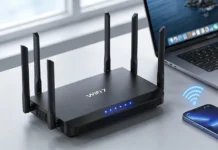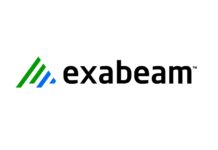Although 5G standardization has yet to begin, the development and selection of the technology enablers is on going. 5G will be about people and things, with three categories of use cases:
- massive broadband that delivers gigabytes of bandwidth on demand
- critical machine-type communication that allows for immediate, synchronous eye-hand feedback to enable remote control of robots
- massive machine-type communication that connects billions of sensors and machines.
The requirements for these use cases are understood and the key enablers to make them happen are becoming clear, not only in radio but across the entire network.
Ultimately, the creation of a successful 5G standard requires the best ideas to be adopted, no matter where they come from. Also, requirements from outside the telecom industry are important to consider.
For example, Nokia has established a broad range of innovation partnerships for targeted collaboration in requirement setting, use cases, technology research and finally in standardization.
To drive 5G technology development, Nokia Networks and NYU WIRELESS research center at the Polytechnic School of Engineering at New York University have organized the second Brooklyn 5G Summit in Brooklyn on 8-10 April 2015. The summit brings together wireless and mobile industry research and development leaders in academia, business and government to explore the future of 5G technologyand discuss the hottest technologies.
Following this great meeting of minds, we can expect 5G to be one step closer to reality.
Nokia Networks showcases 5G speed of 10Gbps with National Instuments
New spectrum bands area key ingredient of 5G networks, enabling ‘virtually zero’ latency for applications such as tactile Internet, connected cars and augmented reality. The summit focuses on spectrum above 6GHz and channel modeling at these higher frequencies. Further advances in massive Multiple Input Multiple Output (MIMO) and beamforming for 5G are also being shown and discussed.
Nokia Networks and National Instruments are demonstrating 10Gbps over the air at 73GHz (mmWave) in an indoor environment. The prototype system uses 2×2 MIMO with single carrier Null Cyclic Prefix modulation and a frame size of 100 micro seconds to achieve low latency and high peak rates. While there have been similar announcements, this prototype is a milestone because it works under real-life propagation and spectrum conditions.
The development will offer users enough capacity wherever they go to perform every function they desire without a drop in speed or connection, no matter how many people are connected at the same time.
For example, users will have the ability to download a full-length HD movie to their device in a matter of seconds rather than minutes. Also, video chat will be so immersive that users will feel as though they can reach out and touch other people right through the screen.8K quality films in 3D will be available, which is 16 times the pixel count of full HD.
Advanced antenna technologies shown
Nokia Networks also features 5G millimeter and centimeter wave radio systems that use advanced antennas and operate in the 3.5–70GHz bands for extreme throughput and ultra low latency.
Active antenna technology with a large number of antenna elements is a key technology to fulfill the 5G requirement of 10Gbs peak data rate. Therefore it is important to investigate how active antenna technology supports the basic concept of beamforming and how various spatial multiplexing techniques using phased arrays can be achieved. Nokia Networks uses the 3.5GHz frequency band which is currently the highest cellular band available and demonstrates beamforming with the Mitsubishi Electric 3.5GHz 2D Active Antenna connected to the Nokia Flexi Base station as a transmitter. Beamforming will be a mandatory feature for most 5G Base Stations.
NYU WIRELESS demonstrates an updated prototype of a “channel sounder,” which is a system for how mm Waves propagate in indoor and outdoor environments. An earlier version of this system provided the first validation that mm Wave cellular networks were feasible. The organization’s second demonstration will be a mm Wave link using LTE-like transmission, but at higher frequencies for future cellular.
Innovation platform for other industries
Every industry will be affected by 5G. Network speeds as high as 10Gbps and with extremely low latency are a driving force for new applications that use massive broadband capabilities. 5G will be the platform enabling growth in many other industries, starting with the IT industry, but also extending to the car, entertainment, agriculture and manufacturing industries.



















